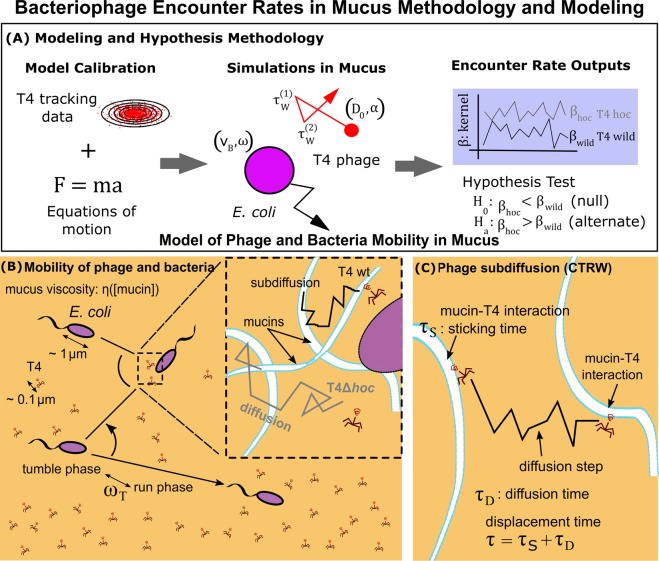Figure 1.
Bacteriophage Encounter Rates in Mucus Methodology and Modeling. (A) Calibrated models of phage and bacteria in mucus is used to evaluate the effect of subdiffusion on encounter rates. (B) The mucus layer was homogeneous, and its viscosity depended on the mucin concentration . E. coli propelled through mucus in a straight line in the run phase, and reoriented randomly in the tumble phase. The tumble rate was the frequency between the two phases. In the inset, phage T4 wildtype (wt) displayed subdiffusion due to its interaction with mucins, while T4Δhoc displayed regular diffusion (no adherence to mucin). (C) The subdiffusion was generated using a continuous time random walk (CTRW) model; the total displacement time (τ) was composed by the sticking time () due to the interaction of T4 and mucins and the diffusion time () due to the diffusion of T4 between mucins.

